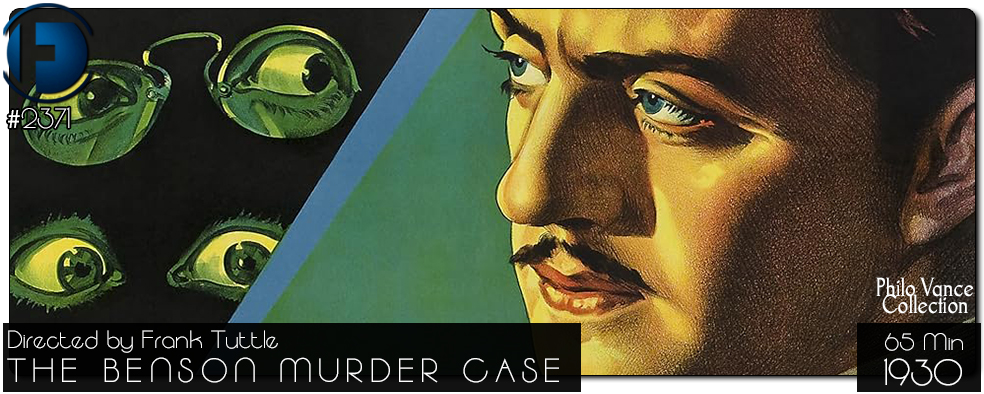Movie Review – Benson Murder Case, The
Principal Cast : William Powell, William “Stage” Boyd, Eugene Pallette, Paul Lukas, Natalie Moorhead, Richard Tucker, May Beatty, EH Calvert, Mischa Auer, Guy Oliver.
Synopsis: A ruthless, crooked stockbroker is murdered at his luxurious country estate, and detective Philo Vance just happens to be there. He decides to find out who killed him.
********
William Powell is far too good an actor to be stuck in a film as iniquitous as this; Frank Tuttle’s The Benson Murder Case jettisons realism for a mix of aloof Holmsian detective work, substandard comedic pratfalls from a bumbling police Sergeant, and an all-too-clumsy screenplay that misfires its ripe period setting with deficient characters and obvious stagey set-pieces. Does all this make it a film you won’t enjoy? Not at all – there’s an alluring 30’s joy to seeing Powell act rings around his co-stars here, and the direction of the numerous “people walking in and out of rooms” plot mechanics is fun on some level. Unfortunately, even with a conspicuously brief hour-and-change running time, there’s not really a lot here worth hanging on to.
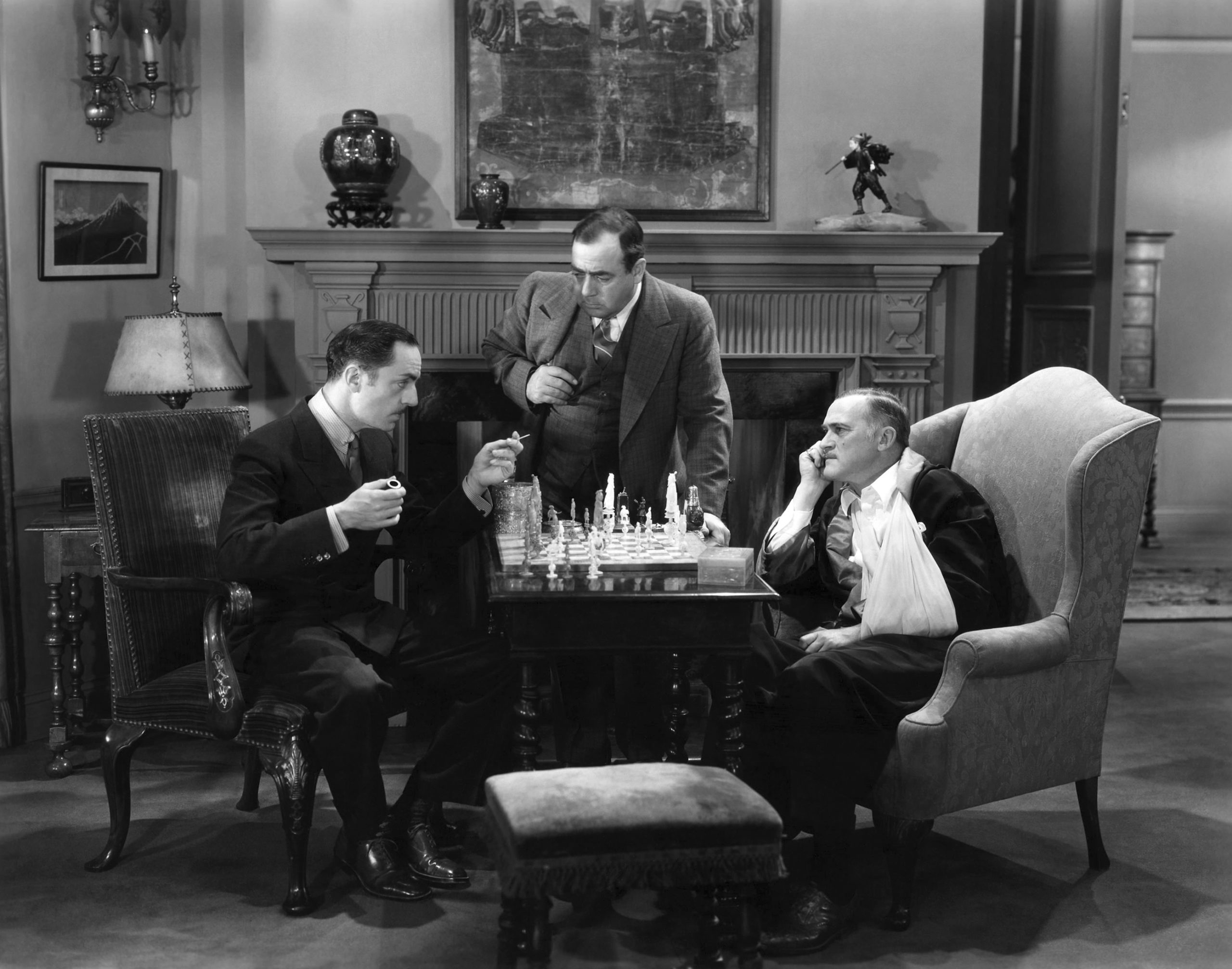
Powell plays amateur New York City detective Philo Vance, who works with the city’s police services solving crimes and generally getting about town. When a ruthless stockbroker, Anthony Benson (Richard Tucker) takes advantage of a group of seemingly disparate people during a market crash, before retreating to his isolated upstate cabin, he inadvertently sets in motion a series of events that will see him murdered; amazingly, all the folks who want him dead are in the cabin with him, making Vance’s investigation all the more complicated. Aiding him as best he can is bumbling New York Police Sergeant Ernest Heath (Eugene Pallette), and garrulous New York District Attorney Markham (EH Calvert), while the potential suspects include frantic young pearl-clutcher Fanny Del Roy (Natalie Moorhead), sweaty cuckold Adolph Mohler (Paul Lukas) and his sugar-mummy Paula Banning (New Zealand-born actress May Beatty), and resident scoundrel and criminal associate Harry Gray (William “Stage” Boyd), none of whom seem to be able to lie straight in bed and for all of whom Vance has his work cut out determining both motive and method to the killing.
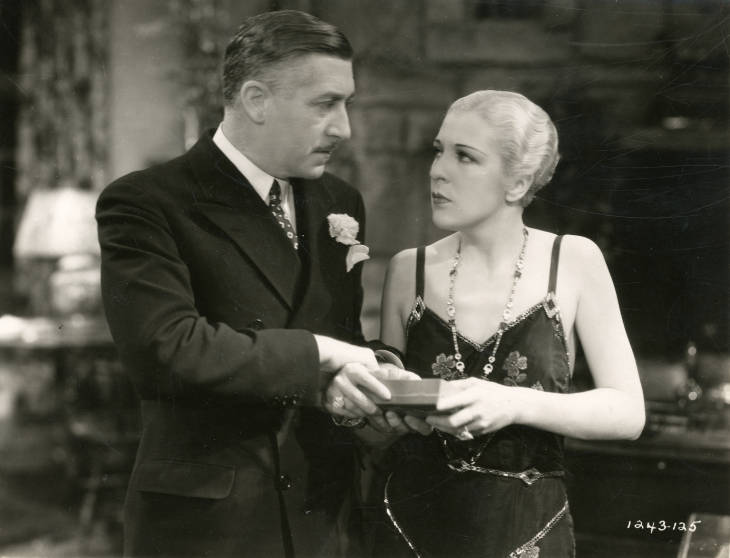
Tuttle’s 1930 film is a loose adaptation of the first in a series of crime novels by author SS Van Dine, published between 1926 and 1939, and it would be the fourth film (of around 12 direct adaptations) to bear the central character of Philo Vance, although the third in which Powell depicts the character. A previous film, The Bishop Murder Case (released in 1929) had starred British actor Basil Rathbone in the lead role, which might give you some sense as to the kind of tone this property had endeavoured to deploy – the more one looks into the books, the more one recognises a very crusty mix of Sherlock Holmes and Hercule Poirot, perhaps apropos given Rathbone would pierce public consciousness playing Conan Doyle’s famous literary detective between 1939 and 1946, while Powell had considerable success with his sparkling Thin Man series. The film’s low-budget and rope-a-dope running time of barely an hour ensures the plot has to zip along quite quickly, perhaps more telling of the pulpy, disposable nature of these B-movies of the day.
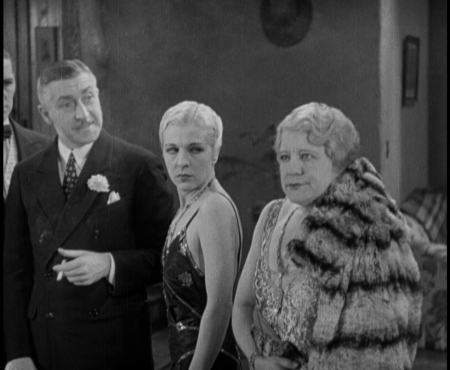
The film’s central premise is a stockbroker who sells out a shit-ton of clients at the height of the market’s great collapse; given the film came out barely six months following the crash that caused the Great Depression, it’s startling to imagine how such a financial catastrophe might have stirred feelings in affected audiences of the day, especially considering the film’s primary antagonist is a stockbroker analogous to the sentiment around banking and finance at the time – the guy’s an asshole and easy to hate, so the bitterness directed at him by several nondescript characters here must have been an easy sell for the screenwriter, Brett Cormack. The original novel was released in the middle of the Roaring 20’s so I can’t imagine the text was too faithfully adapted, but enough of the remnants persist that allow one to pick up on the more “stagey” aspects of the story. Cormack wastes no time giving us the character roster, introducing all of the principal murder suspects (and their intended victim) inside the first five minutes, in a blitzkrieg of exposition, character development and setup before we retreat to Benson’s sprawling (but structurally unsound) cabin on his estate. It’s all so easy-breezy and tremendously silly fun, you can’t help but be swept up in the nostalgic “old Hollywood” feel of the production, but retrospectively it’s not particularly well engineered or nuanced. The writing is, in truth, really quite basic, a factor that would go on to ensure Powell’s disenfranchisement with the series after the next instalment, 1933’s The Kennel Murder Case.
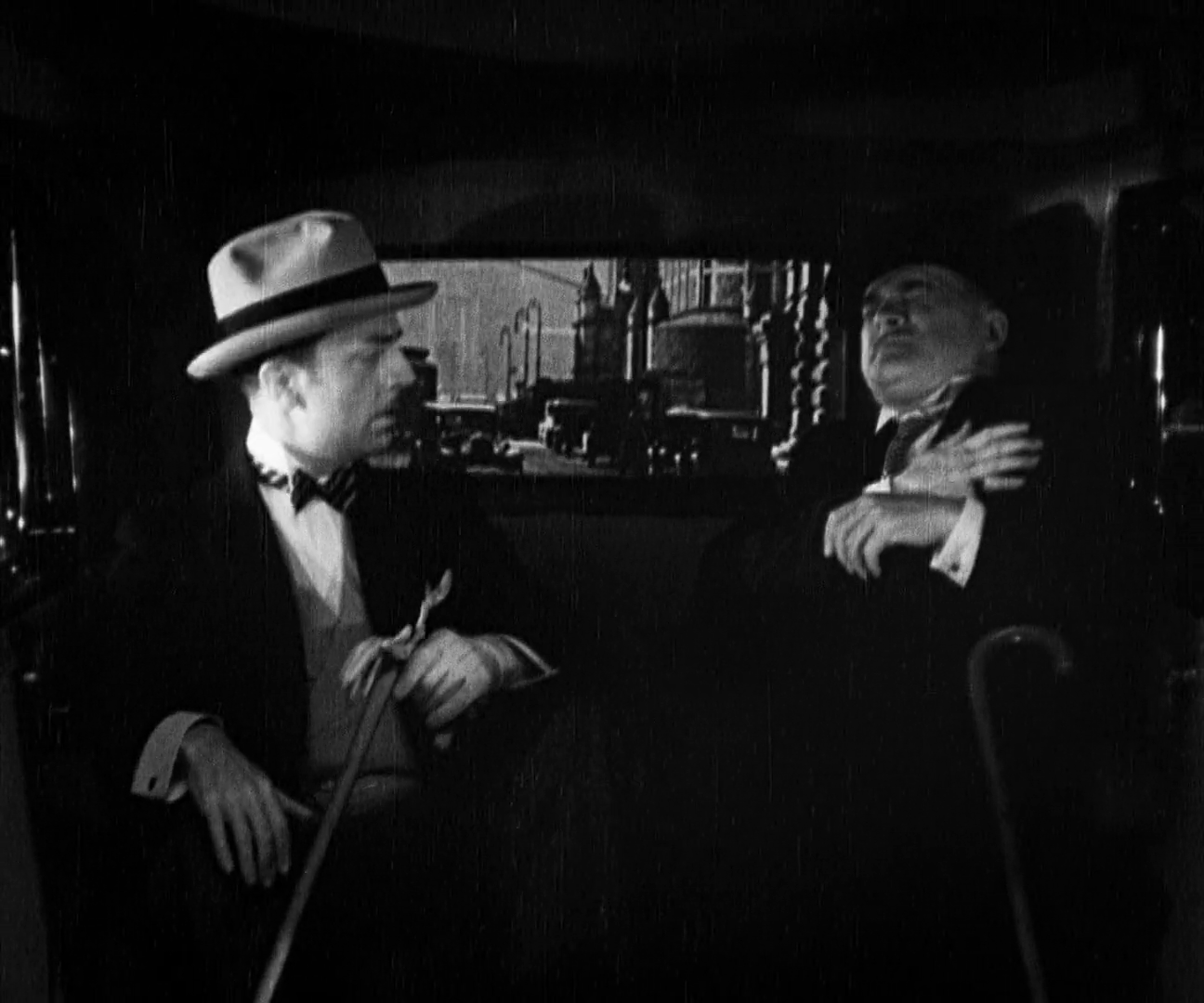
The film attempts to mix semi-serious detective work by Powell’s dilettante detective character with vague comedic gags from a very hard working Eugene Pallette, and the ill-fitting pairing never quite works. Powell is his typical suave, sophisticated self (the man was born to play this kind of offhanded wink-wink archetype, and could do it in his sleep) but the film never demands that he be anything other than Mr Exposition at all times, the playful nature of his dialogue masking a real indifference to the plight of the characters involved and a general lack of… I don’t know, truth to being an amateur detective. There’s almost no sense of threat, and what ticking clock plot device is actually introduced by Vance himself, which does little to aide the story other than give the viewer a sense that “time is running out” in a way. The film’s default second lead character, played by Pallette, is a gasping mix of bullish New York policing and misplayed vaudevillian slapstick, a mugging and physicality inserted to play for cheap laughs, I guess. Whatever direction he was given, Pallette’s turn as Sergeant Heath is often excruciatingly uneven, and you can almost see Powell’s interactions with him in each take feeling more forced and unearned as time goes on.
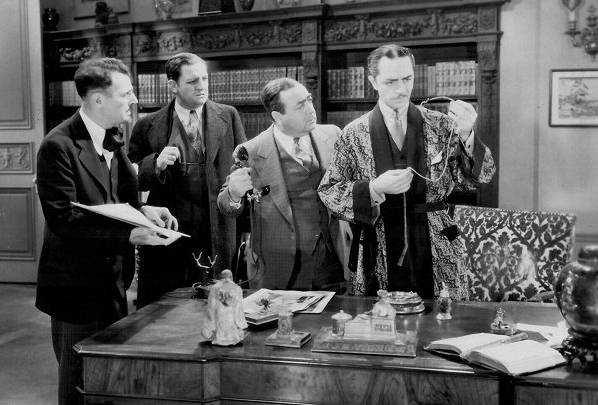
The grab bag of supporting characters all do their best with a script that does them no service whatsoever. These murder suspects all feel one dimensional and played with increasing hysteria in first gear, a screaming engine of nonsensical motivations, incredibly dumb writing and some obtuse, even offensive decision making. The leaps in logic we’re asked to swallow by the end of the film – yes, Powell gets yet another moment to be The Smartest Man In The Room as he unravels the killer’s identity and motives – just gobsmacked me, and although early 20th Century audiences might have thought it a bit of a gasser, modern viewers will perhaps be a touch perplexed at how dull and iniquitous it all is. Red herrings? You’d think so, but alas, every moment of discovery by Philo Vance is plays awfully over the top with “oh boy, heeeeere’s a clue” the viewer is supposed to be interested in. An ongoing gag with a precious jewel box is settled in the most unsatisfying manner imaginable by the end, and also the most cliched.

The only bright spot in this film is Powell himself. He’s inarguably the best thing about the whole production, and the storyline actually lights up the moment he appears in Benson’s cabin doorway. From there he floats through the movie, moving through scenes like he’s above it all (and really, performance wise, really is) and watching him deduce and dissect the mystery is perhaps more pleasurable than watching the mystery itself. He accentuates Frank Tuttle’s serviceable but unremarkable direction more than any other actor in the film, and whenever the camera is on him there’s an intangible alchemy at work that elevates even this pedestrian material. Tuttle tries to engage with the film’s mystery and tonality to evoke shadowy goings-on when he can, but the film’s inherent lack of action and incredibly talky exposition make this task seemingly impossible. At least, it’s impossible for Tuttle. The Benson Murder Case is not some long-lost classic, not by a long shot. It’s thankfully quite short, and gets the job done quickly, but it’s not a very good or interesting film other than the aforementioned caveats. I am, however, going to have to track down some of the other films in this series to give them a try, and having never heard of SS Van Dine or his “classic” literary detective Philo Vance prior to this movie I’m also going to have to brush up on my 1930’s publishing history.

